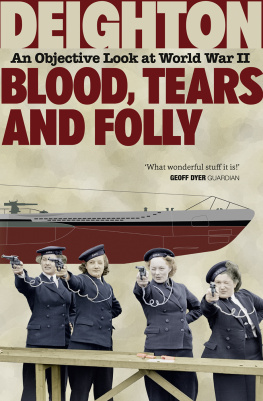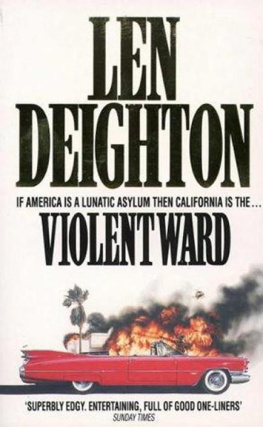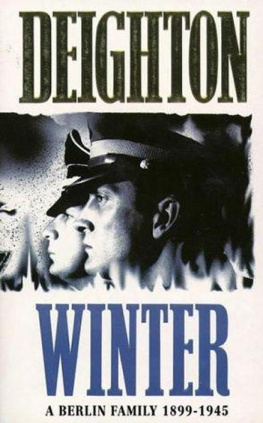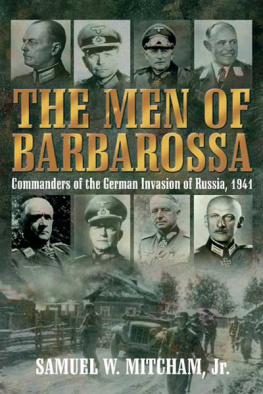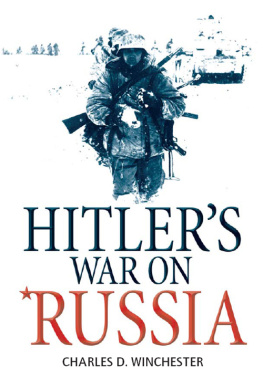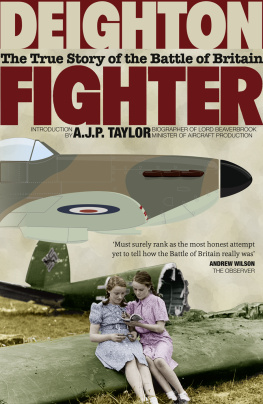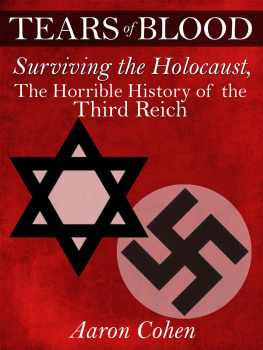Blood, Tears and Folly
An Objective Look at World War II
LEN DEIGHTON

To your children, and ours
C ONTENTS
The story of the Second World War is one of tremendous technological change combined with great human emotion. When I set out to design the covers for this reissue of Len Deightons trilogy of Second World War histories, Fighter, Blitzkrieg and Blood, Tears and Folly, I wanted to incorporate both of these elements into a unified design theme that could be used on all three books. The books were among the first to offer a balanced narrative of the war with both sides of the story being represented, and I felt it was essential that the cover designs were similarly complete.
To convey the concept of technological change and development I created illustrations that begin as a set of plans on the back cover and continue across the spine to become a full-colour image of a fighting machine on the front. Many things we take for granted today, such as the mobile phone, microwave and air-traffic control, owe their development to the innovation that took place during the war.
The Second World War affected the lives of every man, woman and child living in Western Europe between 1939 and 1945. Television news has made us accustomed to watching remotely piloted drones waging war from the safety of our living room sofas, uninvolved except for the opinions we choose to express. In contrast I felt it was important to remind readers of the direct participation and sacrifice made by everyone during the war, so I carefully chose photographs of women in a variety of roles.
One such woman was my grandmother, an audacious and inspirational person who left her job as a chef to become a skilled oxyacetylene welder making flame traps for night-fighters. Thousands of women like her, building airplanes, tanks and ships, were immortalized in America by the Rosie the Riveter campaign. Britains survival during the leanest days of the war owes a debt of gratitude to the Womens Land Army. These hard-working women succeeded in cultivating every available square foot of land and saved the country from starvation when the U-boat campaign was at its most successful.
The extraordinary women of the First Aid Nursing Yeomanry created a secret unit that was dropped by parachute behind enemy lines to undertake espionage work for the Special Operations Executive. Bletchley Parks work in cracking the Enigma codes is well known, and many of the brilliant code-breakers were women. The magnificent women ferry-pilots of the Air Transport Auxiliary flew everything from fast and nimble Spitfire fighters to large and powerful Lancaster heavy bombers, many with battle damage and in need of repair. The Royal Air Force and Royal Navy depended on an army of women radar controllers to manage their operations in the air and at sea.
The contribution to the war made by women was not limited to Britain. In America Jacqueline Cochranes famous Womens Airforce Service Pilots ferried military aircraft, while flight nurses the unsung heroines of the US Army provided critical medical attention to wounded soldiers, saving lives on both the European and Pacific fighting fronts. In Russia, too, all the Red Armys nurses were women. Those serving as front-line medics were also armed and expected to fight alongside their male comrades when not attending to the wounded. Their casualty rate was approximately equal to that of the Red Army infantry. These women demonstrated that they were every bit as willing to help win a war against an enemy that threatened the life they knew. Together they blazed a trail for equality and their lasting contribution to todays society deserves to be recognized.
Blood, Tears and Folly is a history of the Second World War concentrating on the early years when Britain and her dominions came near to defeat. The German navys use of advanced diesel-electric submarines and the four-rotor Enigma machine almost succeeded in starving Britain of raw materials and food. The Type VII is the iconic U-boat of the Battle of the Atlantic. During the early part of the war they were painted in a resplendent three-colour scheme, including a bright red hull below the waterline (they were later painted solid grey to make them less visible). Built by Krupp Germaniawerft in Kiel and launched in 1938, U-47, a Type VIIB commanded by Gnther Prien that sank thirty ships including the battleship HMS Royal Oak, begins as a line-drawn plan on the back cover before appearing menacingly in full colour on the front. The front-cover photograph of a group of Wrens qualifying at the pistol range exemplifies Britains plucky resolve in the face of extreme adversity. This defiant attitude played an important role in convincing a sceptical United States to support Britain in its war against Germany.
Antoni Deighton, 2013
PLATES
FIGURES
MAPS
TABLES
DOCUMENT
The maps and drawings are by Denis Bishop. Permission to reproduce the photographs is acknowledged with thanks to the following sources: Bibliothek fur Zeitgeschichte, Stuttgart (20); Bildarchiv Preussischer Kulturbesitz, Berlin (13); E.C.P. Armes, France (5); Getty Images (1, 14 , 15); Imperial War Museum, London (8, 9, 10, 11, 16, 17, 19); Robert Hunt Library/Mary Evans (18); SZ Photo/Mary Evans (2, 3, 6); Ullsteinbild/TopFoto (4, 7, 12).
Death and sorrow will be the companions of our journey; hardship our garment; constancy and valour our only shield.
Winston Churchill, addressing the House of Commons, 8 October 1940
I was lucky to be so early in my studies of the Second World War. Finding participants was not difficult: the eyewitnesses and the men who had done the fighting were mostly still young. The men who had commanded the battles and made the decisions that influenced them were no longer young. My great good fortune was in being able to talk to such senior figures as General Adolf Galland, the Luftwaffe fighter chief, to Major-General Sir Francis de Guingand, the chief of staff to Field Marshal Montgomery, and to General Walther Nehring, who was chief of staff to General Rommel. (General Nehring was kind enough to write an Introduction for my book Blitzkrieg.) I also met with Albert Speer, Hitlers Minister of Armaments, a remarkable, and usefully frank, source of information about top-level decisions.
When the first edition of this book was ready to go to the printers I sat down with Tony Colwell and Steve Cox, editors who had supported and advised me through the years of writing it. It was the biggest and most demanding work I had ever undertaken and I knew that many of the truths I had uncovered would not bring universal joy. Tony and Steve had been tough critics. It was because they tested and challenged my theories and conclusions that I am now able to look with confidence at this reprinted version which remains as originally written.
***
It is a national characteristic beloved of the British to see themselves as a small cultured island race of peaceful intentions, only roused when faced with bullies, and with a God-given mission to disarm cheats. Rather than subjugating and exploiting poorer people overseas, they prefer the image of emancipating them. English school history books invite us to rally with Henry V to defeat the overwhelming French army at Agincourt, or to join Drake in a leisurely game of bowls before he boards his ship to rout the mighty Armada and thwart its malevolent Roman Catholic king. The British also cherish their heroes when they are losers. The charge of the Light Brigade is seen as an honourable sacrifice rather than a crushing defeat for brave soldiers at the hands of their incompetent commanders. Disdaining technology, Captain Scott arrived second at the South Pole and perished miserably. Such legendary exploits were ingrained in the collective British mind when in 1939, indigent and unprepared, the country went to war and soon was hailing the chaotic Dunkirk evacuation as a triumph.

